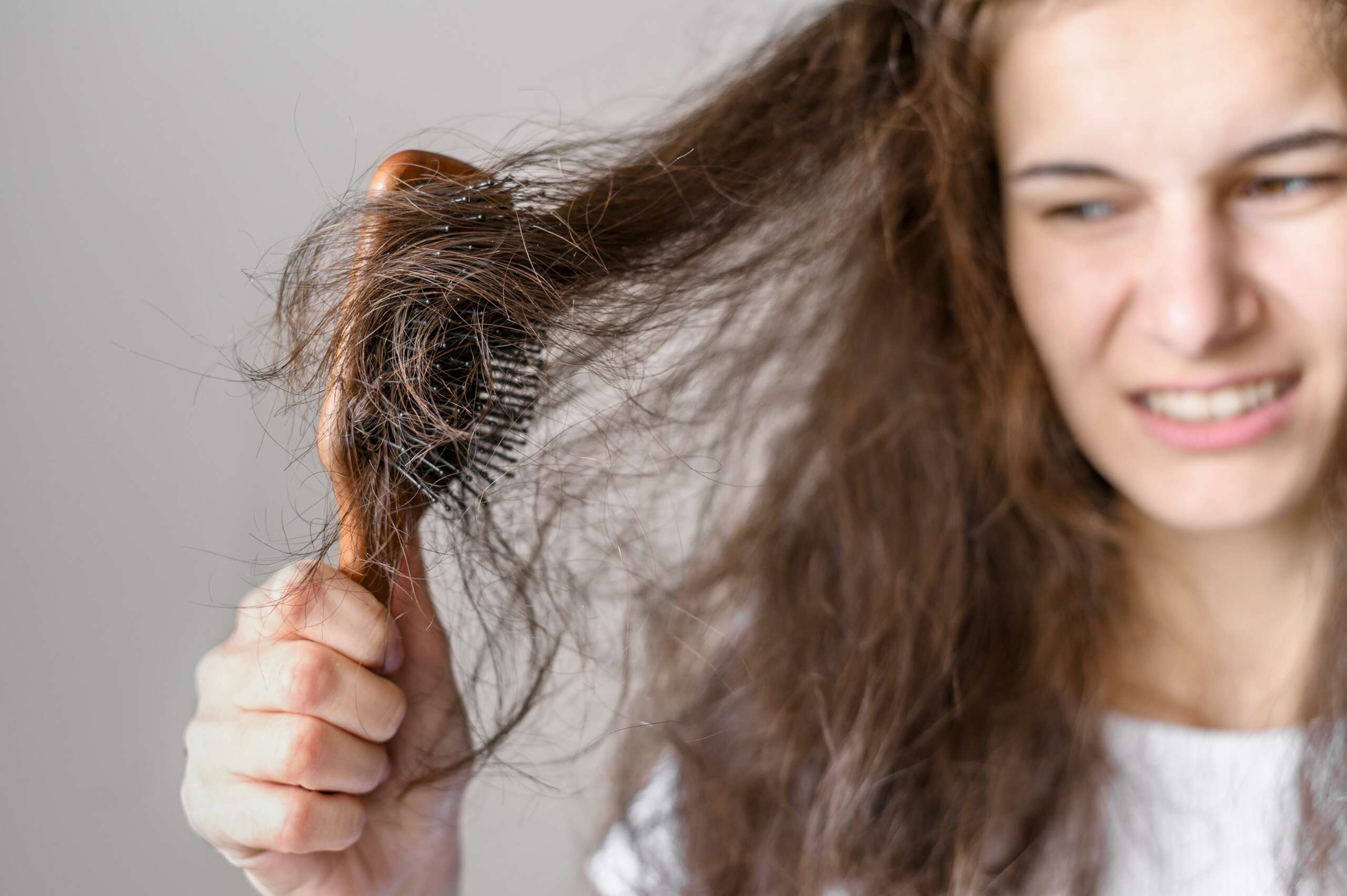Androgenetic alopecia can present also in women since it is a genetically predisposed condition and may be hereditary to all people. In women hair loss presents in a different pattern since common baldness like that seen in men is not the usual case. The usual pattern involves scalp hair thinning mainly all over the top of the head (zones A and B) and preservation of the frontal and temporal hairline. This scalp condition can occur either at a young age of 18-20 years and worsen in time or it can remain relatively constant during a woman’s reproductive life.
Normally women in reproductive age apart from the estrogens they also produce androgens from the adrenal glands and the gonads. Yet the production of estrogens is prevailing and finally the hormonal balance is such that doesn’t allow the manifestation of androgenetic alopecia, even though the genes have been inherited.
There has to be a state of relatively higher androgens (not necessarily higher than the normal) or problematic low level of estrogens, or a state of certain hormonal disorder, so that a hormonal imbalance between androgens and estrogens will take place leading to androgenetic alopecia (female pattern of hair loss).
Such pathological conditions are the followings:
- problematic menstrual cycle and uncontrolled hormonal status
- endocrinological conditions which affect the sex hormones’ balance (like thyroid gland diseases)
- problematic gonad function like in polycystic ovaries
- surgical removal of the ovaries for various reasons (trauma, inflammation)
- ovary cancer
- during the menopause phase (over the age of 45-50 years)
Strangely a great percentage of androgenetic alopecia in young women involves those who do not present a state of sex hormonal or gonads’ problem.
In any case young women (under the age of 40) should get properly diagnosed clinically and with blood and specific hormonal (sex hormones) tests if needed. In certain pathological substrates hair loss may be reversible and proper treatment can improve hair growth without making hair transplantation necessary.
Hair loss diagnosis and treatment of the cause are absolutely necessary before proceeding to a hair transplant for thickening the sparse scalp.
Young women can also use proper hair styling in order to camouflage hair thinning (it is advisable though to avoid excess hair styling and manipulation that chronically tracts and weakens the hair), while they can preserve and strengthen the existing hair with conservative hair loss treatments like the use of local minoxidil solution or the local mesotherapy injections (with heterologous hair loss solutions, or dutasteride or the autologous PRP), consumption of dietary and vitamin supplements, LLLT (low level laser therapy )etc.
Women who are good candidates for a hair transplantation procedure are those over the age of 45-50 who present a family history of androgenetic alopecia and have entered the menopause phase. In this case the dramatic decrease of the estrogen production by the ovaries leads to the relative predominance of the androgen hormones which continue being produced by the adrenal glands yet to a lesser degree (DHEA, DHEAS, D4A hormones).This hormonal imbalance worsens the hair loss rate and the development of alopecia. Statistically in women the incidence of androgenetic alopecia within a male pattern (loss of the hairline and hair loss at the crown area) increases in the greater ages over 60.
When performing hair transplantation in women, hair follicles are extracted from the back of the head by shaving 1-2 lines/zones that are covered by the overlying thick hairs. To reach the needed number of hair follicles for the transplantation, additional extraction of hair follicles from the unshaven occipital area may be necessary.
Hair placement is done mainly in the front part of A zone and the central areas of A and B zones (at the top of the scalp). This way the transplanted hairs can overlay the nearby original ones and provide a satisfying restoration.
The hair transplantation technique, the tools in use, the postoperative image of the implanted area as well as the preoperative and postoperative instructions remains the same as in men.



